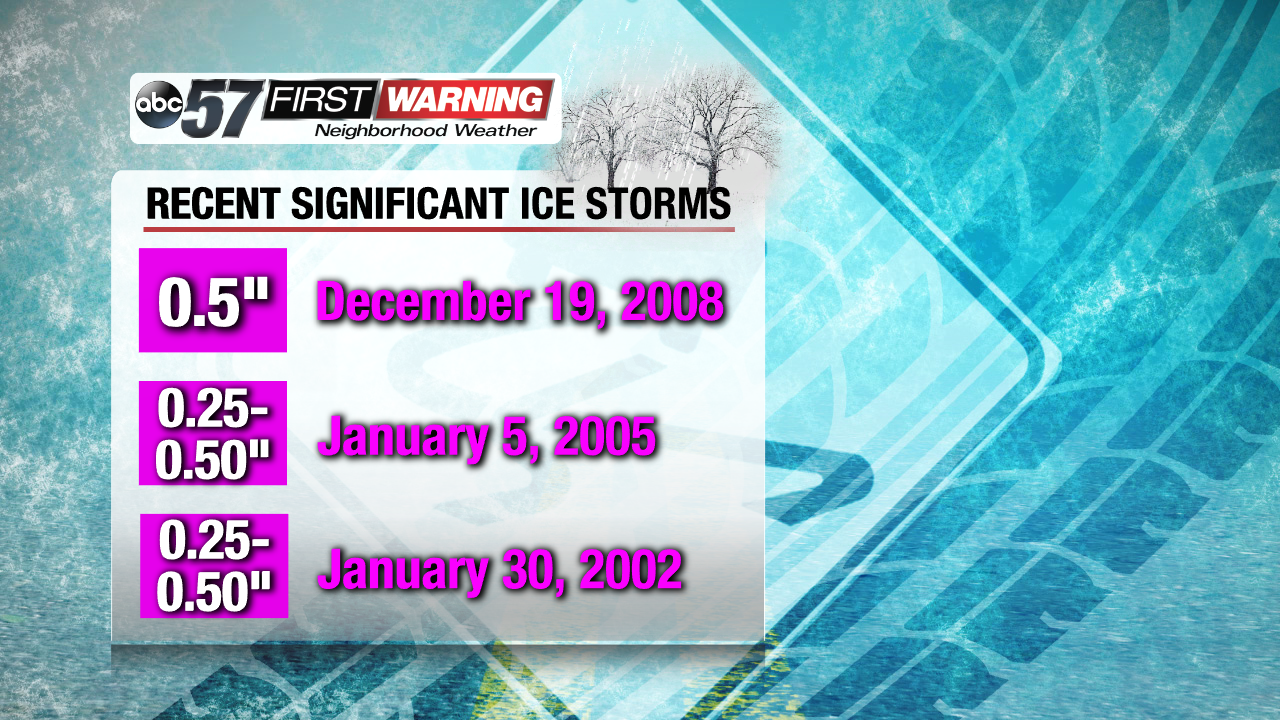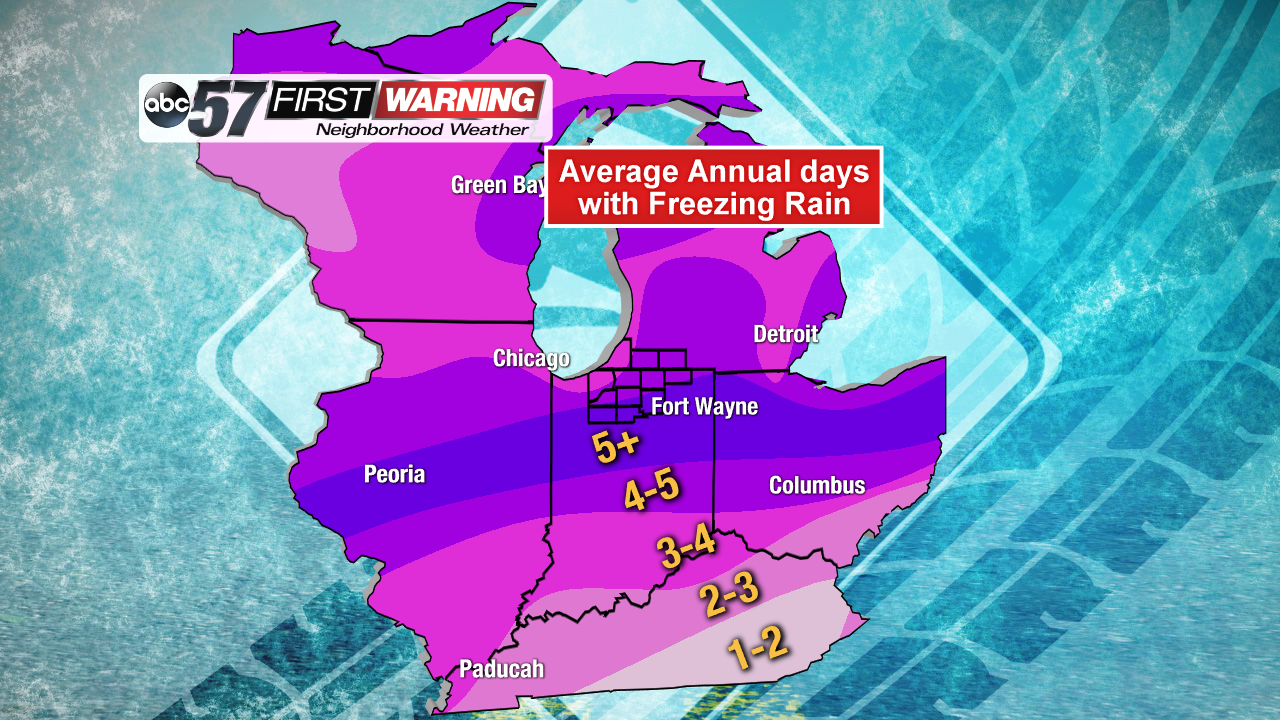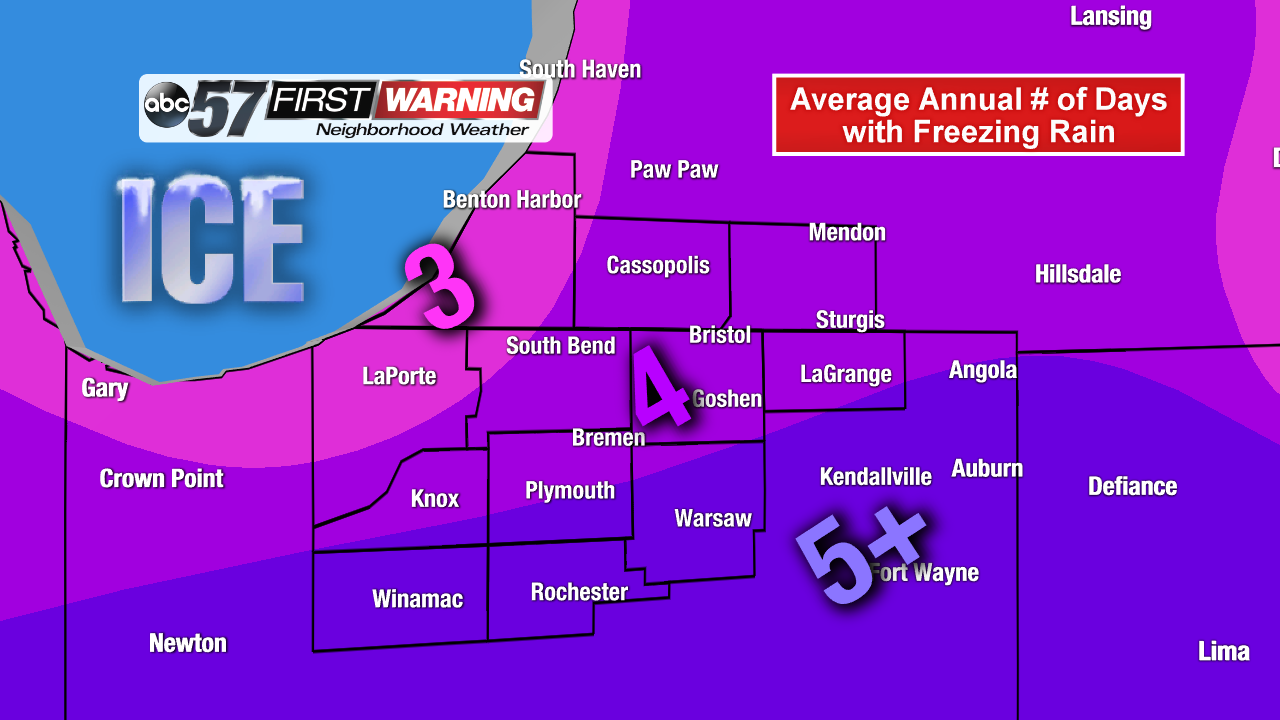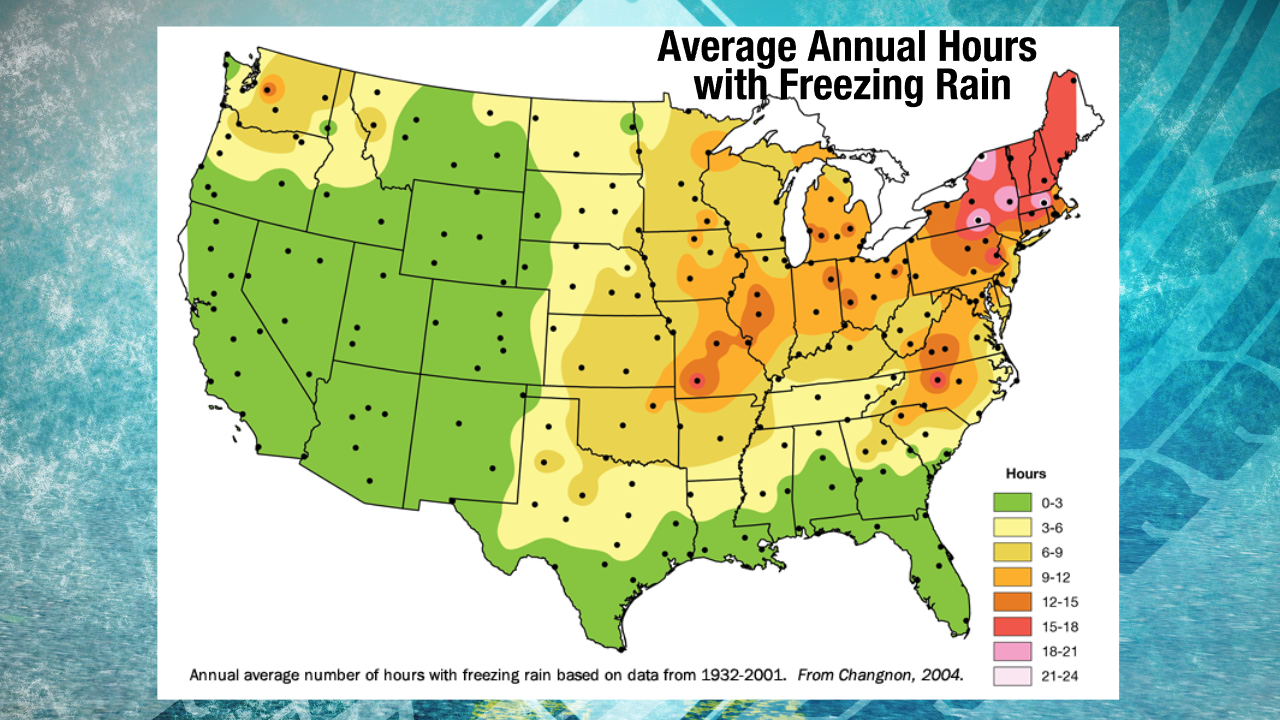Did you know: Michiana is actually in "ice storm" alley
Posted: Feb 13, 2019 11:42 AM EST
We've been slammed by two significant ice storms in the last three weeks here in Michiana. Both instances brought ice accretions of one-tenth to four-tenths of an inch. For perspective, ice accretion over one-tenth of an inch is deemed significant and anything over one quarter inch is considered an ice storm. It's not every year that we get these significant icing events, though. They are relatively few and far between.
It's more common for Northern Indiana and Southwest Lower Michigan to receive less than one-tenth of an inch of ice with any given freezing rain event. In fact, we average 3 to 5 days of freezing rain every year. That doesn't mean we see a significant ice storm that many times; rather, we simply see freezing rain fall, on average, on 3 to 5 different occasions each winter season. Those numbers may not sound very high, but it only takes one "bigger" freezing rain event to cause widespread power outages, numerous accidents and school closures.
Parts of Michiana are actually in what can be referred to as "freezing rain alley." That zone stretches from Northeast Missouri and Central Illinois thru Northern Indiana, Northern Ohio, and into the Northeast and New England. Locations in that "zone" average at least five freezing rain events of varying magnitude every year. Parts of Pulaski, Starke, Marshall, Fulton, Kosciusko, and LaGrange Counties fall within that zone.
Another way to visualize that "high frequency band" is that areas within it average roughly 12-15 hours of freezing rain every year. So, in an average year, that would be about 3 hours of freezing rain occurring on 5 given days for locations in that dark purple band shown above. Again, that may not seem overly high, but it is when considering the impacts of freezing rain. And we are all well aware of those. Unfortunately, we are in a geographical location supportive of freezing rain setups, so despite the analyzed data being from the 20th century, it is still representative of a 21st century winter.





